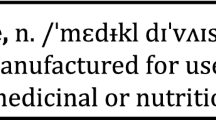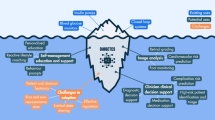Summary
The adoption of new techniques in predictive microbiology by the food industry will ultimately be dependent on the development of user-friendly application software that makes it easy for non-research personnel to employ the mathematical models. Such applications should be an integral part of projects in predictive microbiology. Recommendations related to the architecture, speed, protection, testing, and distribution of application software are presented based on our experience in developing and distributing the ‘Microbial Food Safety Pathogen Modeling Program’.
Similar content being viewed by others
References
Buchanan, R.L. 1991. Using spreadsheet software for predictive microbiology applications. J. Food Safety 11: 123–134.
Buchanan, R.L. and J.G. Phillips. 1990. Response surface model for predicting the effects of temperature, pH, sodium chloride content, sodium nitride concentration, and atmosphere on the growth ofListeria monocytogenes. J. Food Protect. 53: 370–376.
Buchanan, R.L., L.K. Bagi, R.V. Goins and J.G. Phillips. 1993a. Response surface models for the growth kinetics ofEscherichia coli O157:H7. Food Microbiol. 10: (In press).
Buchanan, R.L., J.L. Smith, C. McColgan, B.S. Marmer, M. Golden and B. Dell. 1993b. Response surface models for the effects of temperature, pH, sodium chloride, and sodium nitrite on the aerobic and anaerobic growth ofStaphylococcus aureus. J. Food Safety 13: 159–175.
Gibson, A.M., N. Bratchell and T.A. Roberts. 1988. Predicting microbial growth: growth response of salmonellae in a laboratory medium as affected by pH, sodium chloride and storage temperature. Int. J. Food Microbiol. 6: 155–178.
Palumbo, S.A., A.C. Williams, R.L. Buchanan and P.G. Phillips. 1991. Model for the aerobic growth ofAeromonas hydrophila K144. J. Food Protect. 54: 429–435.
Palumbo, S.A., A.C. Williams, R.L. Buchanan and J.G. Phillips. 1992. Model for the anerobic growth ofAeromonas hydrophila K144. J. Food Protect. 55: 260–265.
Zaika, L.L., J.G. Phillips and R.L. Buchanan. 1992. Model for aerobic growth ofShigella flexneri under various conditions of temperature, pH, sodium chloride and sodium nitrite concentrations. J. Food Protect. 55: 509–513.
Author information
Authors and Affiliations
Additional information
Reference to a brand or firm name does not constitute an endorsement by the US Department of Agriculture over others of a similar nature not mentioned.
Rights and permissions
About this article
Cite this article
Buchanan, R.L. Developing and distributing user-friendly application software. Journal of Industrial Microbiology 12, 251–255 (1993). https://doi.org/10.1007/BF01584198
Received:
Issue Date:
DOI: https://doi.org/10.1007/BF01584198




